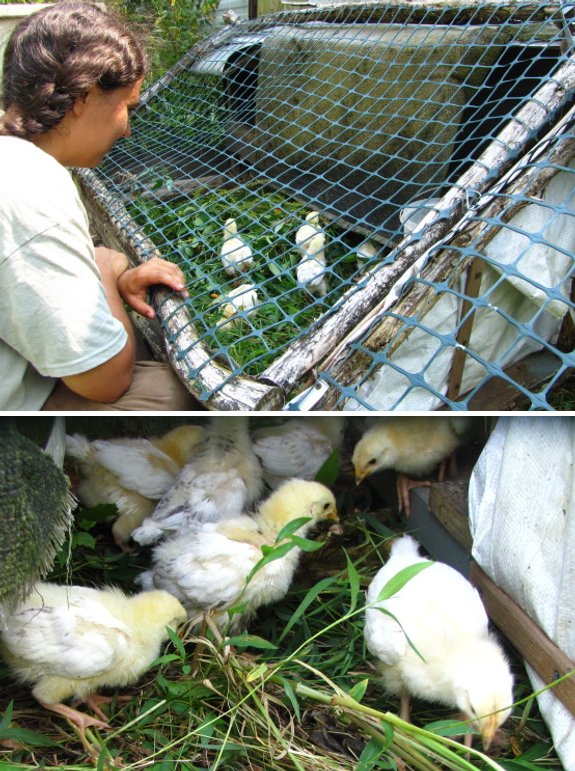
Junior high for small chicks

Instead of putting the new
batch of chicks out in the big bird pasture we decided to convert
an old
chicken tractor into a poultry junior high.
The indoor
brood coop was getting too small, but we didn't quite feel like
they were ready for the real world due to losing some chicks back in
the spring to a mystery predator.
We've got them located behind
the trailer for ample shade and maximum protection. Even a casual
observer can notice an increase in the spring of their step with the
addition of this new environment complete with untold numbers of insects
and worms.
Want more in-depth information? Browse through our books.
Or explore more posts by date or by subject.
About us: Anna Hess and Mark Hamilton spent over a decade living self-sufficiently in the mountains of Virginia before moving north to start over from scratch in the foothills of Ohio. They've experimented with permaculture, no-till gardening, trailersteading, home-based microbusinesses and much more, writing about their adventures in both blogs and books.
Want to be notified when new comments are posted on this page? Click on the RSS button after you add a comment to subscribe to the comment feed, or simply check the box beside "email replies to me" while writing your comment.

You would think that question would be easy, but we're in the midst of a flock transition this year. We started out 2011 with four ancient hens whose laying had dwindled so much that we've been buying some of our eggs, and have spent the year raising four different batches of chicks to replace them. At this instant, we have those old hens plus:
14 Light Sussex chicks (two weeks old). We'll keep three hens and maybe a rooster to be in our permanent flock.
8 Black Australorp pullets and cockerels (three months old), of which we'll be eating 7 this week and keeping one rooster.
1 Turken cockerel, the same age as the above, slated for the freezer.
3 Cuckoo Marans pullets (four months old) to be laying and brood hens next year.
3 Black Australorp pullets (five months old) to be laying hens next year.
So, to answer your question, we currently have 29 chickens, most of which are meat chickens. We'll be going into the winter with ten or eleven chickens. That's really too many for us, but I want to give several breeds a real try before culling the flock down, and we're sick of buying eggs.